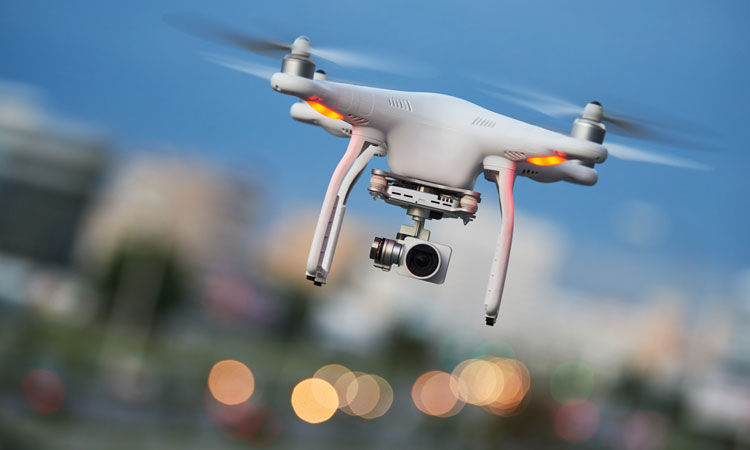Drones: Allies in airport operations
- Like
- Digg
- Del
- Tumblr
- VKontakte
- Buffer
- Love This
- Odnoklassniki
- Meneame
- Blogger
- Amazon
- Yahoo Mail
- Gmail
- AOL
- Newsvine
- HackerNews
- Evernote
- MySpace
- Mail.ru
- Viadeo
- Line
- Comments
- Yummly
- SMS
- Viber
- Telegram
- Subscribe
- Skype
- Facebook Messenger
- Kakao
- LiveJournal
- Yammer
- Edgar
- Fintel
- Mix
- Instapaper
- Copy Link
Posted: 20 August 2021 | Fernando Augusto de Castro | No comments yet
Fernando Augusto de Castro, Head of Macaé Airport and Offshore Business, tells International Airport Review about how the airports managed by Zurich Airport Brasil have adopted drone equipment and, as a result, have increased efficiency and agility in their daily operations.


The use of drones at airports is a very sensitive topic that covers areas from flight safety aspects, to protection against acts of unlawful interference (security). However, this does not change the fact that drones are very powerful tools; indeed, some would say that they are part of some of the greatest technological revolutions of recent times.
Using remotely piloted aircraft has become an option in various fields, including their use in construction, topography and georeferencing, military applications and as a sport. However, when it comes to airports, what is it that makes this equipment one of the main concerns of the aviation industry? There is a simple answer: anyone today can have access to drones, and such equipment, though to all appearances are small and harmless, can be the cause of catastrophic consequences. They can induce mid-air collisions with aircraft or even be used as a tool for an act of unlawful interference in airport areas. For these reasons, the main drone manufacturers apply geofencing technology, an important tool for inhibiting drones from flying into restricted areas, such as airports.
The use of drones at airports is a very sensitive topic that covers areas from flight safety aspects, to protection against acts of unlawful interference (security). However, this does not change the fact that drones are very powerful tools; indeed, some would say that they are part of some of the greatest technological revolutions of recent times.
Using remotely piloted aircraft has become an option in various fields, including their use in construction, topography and georeferencing, military applications and as a sport. However, when it comes to airports, what is it that makes this equipment one of the main concerns of the aviation industry? There is a simple answer: anyone today can have access to drones, and such equipment, though to all appearances are small and harmless, can be the cause of catastrophic consequences. They can induce mid-air collisions with aircraft or even be used as a tool for an act of unlawful interference in airport areas. For these reasons, the main drone manufacturers apply geofencing technology, an important tool for inhibiting drones from flying into restricted areas, such as airports.
Perhaps this is one of the main reasons why airports are still acting cautiously and do not even consider using drones in their operations. However, if drones are used with the correct procedures and co-ordination and are operated by qualified staff, airports end up with an extremely effective tool for a wide number of applications.
Zurich Airport Brasil was faced with this paradigm at Florianópolis International Airport (FLN), and decided to consider the gains and benefits that using drones could bring, together with the procedures for mitigating risks. This project has since become strategic for the company, involving technology, efficiency and even gains in operational safety levels.
It started by chance
The first drone flights over the airport in Florianópolis – a city in southern Brazil – took place to survey the area where the new passenger terminal and apron were to be built, under concession to the Zurich Airport Group. The construction company that took over the project had already used this tool in previous projects.
The first authorisation given by the air traffic controller (ATCO) was for overflights in short time windows, as the drone would be restricted to certain areas and would only be used during the construction period. The operations took place, with a low number of operations, and involving security and operational safety managers of the airport. It soon became clear to all concerned that the use of drones was very useful for reconciling the analysis of the operational areas and for the operational security areas of the airport.
Executing construction work in operational areas while keeping an airport operational is a very delicate task, and the information provided by the drones was key to the decision making process when planning the operations during the construction period. It did not take long for this equipment to be requested for field checks unrelated to the construction works. It all came about by chance, but, at that stage, the airport administration felt it incumbent upon to look for ways to implement the use of drones in operational routines.
The reality now would certainly be very different if we had not used this equipment and had not experienced its effectiveness in practice. Although the use of drones poses imminent danger at an airport, it soon became clear that having the authorisation of the air traffic controller, and by applying safety and security procedures, the risks of this operation were considerably reduced, and the advantages outweighed the risks exponentially.
A strategic project for the company
Even though drones were used by Zurich Airport Brasil during the construction work of the new terminal, these overflights occurred on a temporary and sporadic basis. The idea now is that these overflights should be on a daily basis and be integrated into operational routines. The first step for this to happen was to create our own airport administration team and engage employees with knowledge of the airport’s operational routine and safety and security procedures. This team worked closely with the Air Traffic Service (ATS) agency and created an operational agreement.
Incorporating drone operation into operational routines did not take place suddenly; it took at least three months from the beginning of the project to perform tests and improve operational procedures. One of the starting points was to really understand the advantages of carrying out inspection routines by using drones in order to make it a really effective operation. Attention was given to avoiding incorporating the use of drones into procedures where the equipment did not present palpable advantages.
This was a pioneer project in Brazilian airports. There are some reports of similar applications in a small number of airports around the world, but, in Brazil, Florianópolis Airport was the first one to incorporate drones into operational routines.
The first phase of the project included overflights for the following purposes:
- Inspections on the runway, taxiways and aprons
- Pavement surface monitoring (maintenance)
- Inspection at the entire airport site, including fencing (security)
- Monitoring the presence of wildlife at the airport site
- Security monitoring on the access roads to the airport
Direct and indirect advantages
Using drones has transformed the airport’s operational routines for the better. It has now been possible to have access to places that had been hitherto inaccessible due to vegetation, flooding or other physical aspects in the vicinity and fences of the airport site. As a result, vulnerable areas can now be identified and monitored, supporting actions of improvement to fencing and procedures that have been adopted by the routine monitoring of the security team.
A database with the history of information and images based on the inspection of the infrastructure was created and, through this practice, the team can now compare and monitor inspections thoroughly to evaluate the progress of pathologies in the infrastructure, especially related to the pavement. This is a very important tool in decision making when allocating investments and maintenance resources.
Runway occupancy time has been reduced, thus increasing the airport’s nominal operational capacity. A complete inspection of the runway and taxiway system with drones is now performed in 12 minutes. It takes at least twice as long to perform the same inspection by using operational vehicles. In addition, the time spent by aircraft marshallers to carry out inspections has also been reduced, giving them more time to execute other operational tasks.
Inspections can now be carried out more frequently, as they have become more cost‑effective and bring excellent results. Drones have also replaced the use of vehicles in some tasks, providing opportunities to reduce greenhouse gas emissions by 5.3 tonnes per year. Although this is a secondary gain, it was a major factor in the company’s decision to expand the project and invest in new drones.
For the same reason mentioned above, the company has managed to reduce operating costs with inspections vehicles usage by 41.7 per cent. Drones can reach regions of difficult access for people or vehicles where there is a tendency for a great concentration of fauna. This equipment has enabled the collection of a wealth of information for wildlife hazard management.
The expansion of the project
As such good results were achieved in the first phase of the project at Florianópolis Airport, Zurich Airport Brasil extended the performance of tests to use drones at Macaé Airport (MEA) and Eurico de Aguiar Salles Airport Vitória (VIX) at the beginning of 2021. As in Florianópolis, authorisation was requested, and granted, by the local ATS agencies, and training and qualification for pilot drones was provided for local teams.
The company is now going forward with the purchase of new equipment for the three airports under its management. The goal is to expand and support the use of drones in the airports’ operational areas. Brazilian airports show that, rather than being a threat, drones can be great partners in operations.






Issue
Related topics
Related airports
Eurico de Aguiar Salles Airport Vitória (VIX), Macaé Airport


















